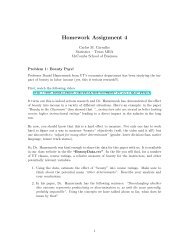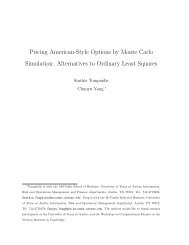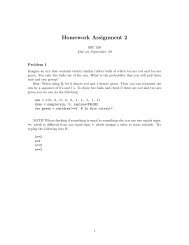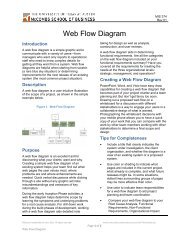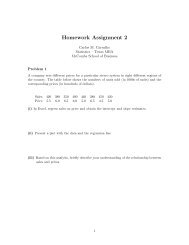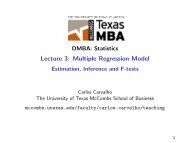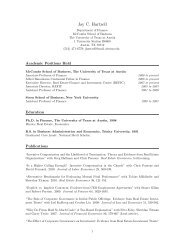Agile Requirements Modeling Example 1. Initial Envisionment
Agile Requirements Modeling Example 1. Initial Envisionment
Agile Requirements Modeling Example 1. Initial Envisionment
You also want an ePaper? Increase the reach of your titles
YUMPU automatically turns print PDFs into web optimized ePapers that Google loves.
<strong>Agile</strong> <strong>Requirements</strong> <strong>Modeling</strong> <strong>Example</strong>http://www.agilemodeling.com/essays/agile<strong>Requirements</strong><strong>Example</strong>.htmPage 2 of 133/1/20112. To define the high-level requirements for your system.3. To build a consensus amongst your stakeholders and within your development team as to what therequirements imply.The initial requirements envisionment effort can be as short as a few hours, particularly if you are co-locatedwith your project stakeholders and they are able to come to a general consensus as to what the system shoulddo, or could stretch on for several days or even weeks in situations that are less than ideal (see OvercomingCommon <strong>Requirements</strong> Challenges). You will typically hold large modeling sessions, which typically:Are long, sometimes several days in length for large projectsHave many project stakeholders involved so as to hear the requirements from a wide range of peopleTend towards the formal end of the scale (often due to the larger number of people and sometimes dueto a lack of familiarity of your project stakeholders with more agile approaches)Include some developers, particularly when you want to start building an understanding within your teamof what the system is to accomplishThe scope of your system may be defined by a single statement, in the case of SWA Online it may besomething as simple as “To sell our products to customers via the Internet” or a statement with greater detailsuch as “To sell physical, but not virtual, products to existing or new customers in the Continental UnitedStates”. Your system scope may also be defined using a context model – a model showing how your systemfits into its overall environment – something that is often depicted using a use case diagram, as you see inFigure 2, or as a dataflow diagram (DFD) as in Figure 1 (this style of diagram is often called a “level-0” DFD).It is important to understand the scope of your system so as to limit your development efforts. The firststatement was too vague, it could be taken to mean that you are selling to international customers, asignificantly greater effort than selling only within the USA, as well as selling virtual products such as onlinemusic which would require the addition of an online delivery system as well as a physical one. You may findthat your scope changes over time, a decision to be made by your project stakeholders, so be prepared toembrace change.Figure <strong>1.</strong> A data flow diagram (DFD) used to model the context of SWA Online.



